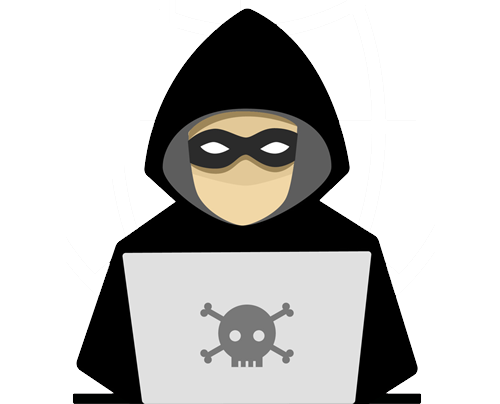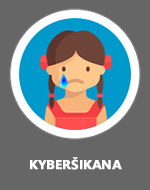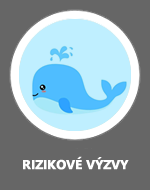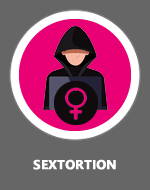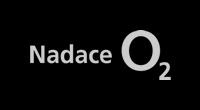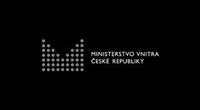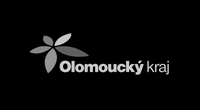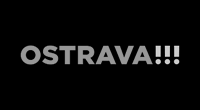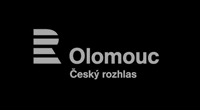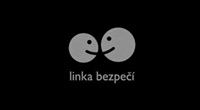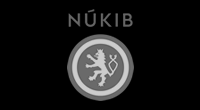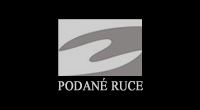 Extortion of children on the Internet has become taboo matter to a certain extent. On the one hand, it is because of the nature of the materials that are used for extortion, on the other hand there is an effort to conceal the individual cases in order to do no harm to victims, conceal a particular problem, hush up the case and try to solve it on its own.
Extortion of children on the Internet has become taboo matter to a certain extent. On the one hand, it is because of the nature of the materials that are used for extortion, on the other hand there is an effort to conceal the individual cases in order to do no harm to victims, conceal a particular problem, hush up the case and try to solve it on its own.
In recent years, the number of children who were extorted on the Internet has been constantly growing. According to research NIK4 realized by the E-Bezpečí project team and Seznam.cz, 7,33% of Czech children experienced extortion as a victim. According to the findings of the two organizations, most serious cases of children extortion follow simple but very dangerous schemes.
In this paper we will explain how extortion proceeds in its probably the most aggressive forms - extortion through intimate materials with escalating intensity of the attack. This pattern was observed in a large number of cases that the team of the E-bezpečí project has worked on in recent years.
1st phase - establishing contact with a child
At this stage, the attacker makes contact with the child, which usually starts with simple sentence: Hi, will we exchange our photos? The attacker usually uses the identity of the same sex, girl writes to girl, boy writes to boys. In case the girl writes to the boy, it is probably not only extortion, but also cybergrooming - extortion gradually proceeds to begging for a personal meeting with the victim.
If the child responds positively (Okay, we will exchange the photos.), the attacker is likely to send the photo to the child first or he/she will send even "a series of" photos with intimate content.
2nd phase - the manipulation by flattery
To catch the child’s attention, the attacker starts to evaluate positively all the materials which the victim has sent him/her. As soon as the victim sends the photo, the attacker starts to flatter and comments the photo like this: You're beautiful in that photo. You have a beautiful body. You look beautiful. You're amazing. The flattery is usually followed by sentence: Will you send me another photo? With this method, the child is relatively easy to obtain – the child craves for admiration and recognition, he/she wants to be admired and appreciated by someone. Manipulation by flattery continuously permeates all subsequent phases.
3rd phase – verifying of the real identity of the victim
In this phase, the attacker tries to confirm the identity of the victim. He/she, for example, wants the child to take a picture of himself/herself with a specific inscription and date (for example, for Jane, 05/31/2013). In this phase the attacker is not interested in getting photos of face or intimate photos of the child, but he/she only wants to determine whether he/she really communicates with a particular child and whether the photos are truly authentic.
Verification of the identity of the attacker usually starts with a sentence: No, it’s not you in the photo. I do not believe. Take the photo by a mobile phone and write - for Terezka. But the photo can be without your face…
Techniques for the identification of people on the Internet by photos with specific words, current date or newspaper are commonly used to validate the identity of anyone on the Internet. It is positive technique, but it can be misused within extortion.
4th phase - the escalation of intimacy
We call this phase escalation of intimacy because intimacy of photos which are exchanged between the victim and the attacker increases and intensifies. The photos showing a dressed child are gradually replaced by photos, in which the child is partially or completely naked, to photos, in which 12-year old children put their fingers into the anus or vagina... Then, of course, the attacker also sends similar photos to a child, usually photos of foreign erotic or pornographic sites. Most of the material sent by the attacker falls into the area of child pornography. The phase called escalation of intimacy is very dangerous because the child imitates the behaviour of an attacker and is able to send him/her almost anything.
5th phase - two-stage extortion
If the child chooses to leave the scheme of exchanging photos, the attacker usually proceeds to extortion. This is usually realized in two ways:
a) extortion by "friends" on social networks,
b) extortion by the parents of the victim.
At the level of extortion by friends on social networks the attacker threatens the child that if he/she does not send other materials, the attacker will send everything he acquired from him/her to friends of the victims and to other users of social networks, so the speed of the spread of these materials is very high. The attacker chooses such formulations: I will send it to all that I have added as friends. So you will take photos of you and send it to me as I want, or I put it on the Internet and all your friends will see it and it will be embarrassing for you. Is that clear? So send everything to me (sample communication of a real case).
In the next stage of extortion the form of attack that is repeated with the fact that the parent is used to extort the victim. The communication of the attacker and the victim then goes as follows (sample communication of a real case):
Tereza (attacker)
Do not make me send the photos to your dad.
Jana (victim)
You know his name?
Tereza (attacker)
https://www.facebook.com/otec.jany.petr
What about Peter?
So send me everything. Otherwise, I will send it to him and you'll have a terrible problem.
Jana (victim)
Ok, but tomorrow, I really can not do it now, I'm sorry, but tomorrow, ok? :)
Tereza (attacker)
No. You've been saying it for the third time. Now, or I will send it to him.
Jana (victim)
Ok, so now.
Tereza (attacker)
You have two minutes to think about it.
Jana (victim)
Pls, do not do it, I will take a picture of whatever you want.
Tereza (attacker)
Ok, so I want your breasts ... I want to see at least a little bit of your face, this is the first photo, if you try to send me anyone else, I will send it ... so take a photo of yourself ... breasts…so do as I say ... You've got three minutes to take the photo of your breasts.
Jana (victim)
(Jana sent the photo in time, the photo taken in the bathroom shows her face and breasts)
Extortion continues, the attacker has got the face of a child. The probability that the attacker will get more intimate material from the child grows.

Prevention and education as the main way to fight against online extortion of children
In the fight against online extortion of children, prevention and education play an invaluable role. A child who goes through training focused on the subject will be able to easily detect manipulation in the early stages and stop it. Unfortunately, children turn to the police usually when the 5th phase of extortion is already in progress and the child feels he/she is not able to cope with it on his/her own. The child then rather contacts various specialized institutions such as the Safety Line, but they recommend contacting the police and notify them of extortion anyway.
In case a child gets into a similar situation, we recommend immediately contact the police (nearest district police department) or counselling centre of the E-Bezpečí project that work closely with the police and are able to mediate contact with the police. They are also able to advise parents and children how to proceed in this situation.
A few rules to combat online extortion
1. Never send anyone your photos or videos in which you are partially or fully nude. Do not send photos of intimate areas that do not show a face. In any case, do not provide your erotic pictures to your partner, boyfriend or girlfriend.
2. Do not share photos and videos in which you are partially or fully nude in private password protected galleries, do not share it through cloud storage (Dropbox,
3. If someone sends you repeatedly the intimate photos that depict naked children, contact a specialized institution or the police. Never distribute these pictures!
4. When sharing information on the Internet use the method of "grandmother" - Do not share anything you would not show to your grandmother.
dr. Kamil Kopecký
E-Bezpečí / Centre for the Prevention of risky virtual communication PdF UP














 Trivium
Trivium Pravda a lež v online světě
Pravda a lež v online světě




